Papers by Prasert Pavasant
Chemical Engineering Research and Design
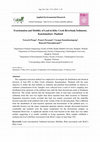
Applied Environmental Research
The sequential extraction method was employed to investigate the distribution and chemical fracti... more The sequential extraction method was employed to investigate the distribution and chemical fractions of lead (Pb) in Klity Creek sediments, Kanchanaburi, Thailand with the main objective to define the lead mobility in sediment and potential bioavailability in relation to sediment contamination levels. Samples were collected from a total of twelve sampling sites distributed from upstream of the polluted zone until the final downstream point at Srinakarin Reservoir. The results showed that the background value of total lead concentration in the sediments from this area was higher than those reported from other locations in Thailand. Sequential extraction results revealed that lead was mainly associated with the reducible fraction especially in the polluted zone in the vicinity of the ore dressingplant. This is different from the distribution of lead fractions upstream and downstream of the polluted area, i.e. reducible fraction was the major component upstream whereas strongly dissoci...
Environmental Progress & Sustainable Energy
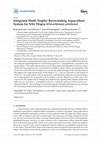
Sustainability, 2016
Three densities of the sex-reversed male Nile tilapia, Oreochromis niloticus (20, 25, 50 fish/m 3... more Three densities of the sex-reversed male Nile tilapia, Oreochromis niloticus (20, 25, 50 fish/m 3) were cultivated in an integrated multi-trophic recirculating aquaculture system (IMRAS) that involves the ecological relationship between several living organisms, i.e., phytoplankton, zooplankton, and aquatic plants. The results indicated that, by providing proper interdependency between various species of living organisms, the concentrations of ammonia, nitrite, nitrate, and phosphate in the system were maintained below dangerous levels for Nile tilapia throughout the cultivation period. The highest wet weight productivity of Nile tilapia of 11˘1 kg was achieved at a fish density of 50 fish/m 3. The aquatic plants in the treatment tank could effectively uptake the unwanted nitrogen (N) and phosphorus (P) compounds with the highest removal efficiencies of 9.52% and 11.4%, respectively. The uptake rates of nitrogen and phosphorus by aquatic plants could be ranked from high to low as: Egeria densa > Ceratophyllum demersum > Vallisneria spiralis and Vallisneria americana > Hygrophila difformis. The remaining N was further degraded through nitrification process, whereas the remaining P could well precipitate in the soil sediment in the treatment tank.
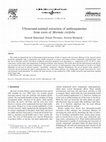
Ultrasonics Sonochemistry, Sep 1, 2006
This study investigated the use of ultrasound-assisted extraction (UAE) to improve the extraction... more This study investigated the use of ultrasound-assisted extraction (UAE) to improve the extraction efficiency of the classical solvent extraction techniques such as maceration and soxhlet extraction to extract anti-oxidant activity compounds, anthraquinones, from the root of Morinda citrifolia. The effects of different extraction conditions were determined, i.e., temperature of (25, 45, 60°C), ultrasonic power, solvent types, and compositions of ethanol in ethanol-water mixtures. The results show that the yield increases with increasing extraction times and extraction temperatures. The percent recovery of anthraquinones using ultrasound was found to be highly dependent on the type of solvents (acetone > acetonitrile > methanol > ethanol). Furthermore, the use of ethanol-water solution as extraction solvent increased the yield of anthraquinones due to the relative polarity, the swelling effect of plant tissue matrix by water, and increased sound absorption. To achieve the same recovery as that achieved by UAE, soxhlet extraction and maceration required much longer time.
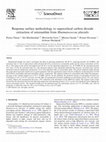
Bioresource Technology, May 31, 2008
Experimental design was used to investigate the effect of operating temperature (40-80°C), operat... more Experimental design was used to investigate the effect of operating temperature (40-80°C), operating pressure (30-50 MPa), and extraction time (1-4 h) of supercritical carbon dioxide (SC-CO 2) extraction on astaxanthin yields and the extract antioxidant activity (IC 50). The ranges of the factors investigated were 40-80°C for the operating temperature (X 1), 30-50 MPa for the operating pressure (X 2), and 1-4 h for the extraction time (X 3). The statistical analysis of the experiment indicated that pressure, extraction time, and the interaction between temperature and pressure (X 1 X 2) had significant effect on astaxanthin yields. The central composite design showed that polynomial regression models were in good agreement with the experimental results with the coefficients of determination of 0.924 and 0.846 for astaxanthin yield and antioxidant activity, respectively. The optimal condition for astaxanthin yield within the experimental range of the variables studied was at 70°C, 50 MPa, and 4 h. At this condition, the predicted amount of astaxanthin extracted was 23.04 mg/g (2.3 wt% or 83.78% recovery). For the effect of experimental extraction conditions on antioxidant activity, IC 50 was used as an index, which is the concentration that gives a 50% reduction in the absorbance of the ABTS free radical. The analysis of the results showed that the interaction between the operating temperature and operating pressure (X 1 X 2) was the only significant factor affecting the extract antioxidant activity. The statistical model gave the minimum point for antioxidant activity at 67°C, 40.3 MPa, and 1.86 h of extraction, at which the value for 1/IC 50 was 0.39 l/mg (or IC 50 was 2.57 mg/l).

Journal of Environmental Management, Aug 31, 2006
Raw water from the Bangkok (Thailand) main municipal water supply canal was examined for its natu... more Raw water from the Bangkok (Thailand) main municipal water supply canal was examined for its natural organic composition by fractionation with adsorption resins. DAX-8 resin was the first resin employed to fractionate the hydrophobic fractions. Fractionation at neutral pH resulted in the separation of the hydrophobic neutral components; at a high pH level (approx. 10) separation of the hydrophobic base components occurred; and at a low pH level (approx. 2) the hydrophobic acid components were separated. AG-MP-50 cationic resin was then used to separate the hydrophilic base components, and WA-10, a weak anionic resin, was applied finally to fractionate the hydrophilic acid and neutral components. Subsequently, each fraction was tested for its chlorine disinfection by-product (DBP) formation potential. The HAA formation tests demonstrated that the various organic fractions had different reactivity levels for the formation of haloacetic acids (HAAs). For this source water, the hydrophilic neutral fraction dominated over the other five fractions in being the main organic component and the most significant precursor of HAAs formation. On the other hand, in terms of specific HAA formation potential (FP), the hydrophobic and hydrophilic base fractions were the most reactive precursors to the formation of HAAs. In all cases, the quantity of HAAs formed depended linearly upon the amount of organic constituents in the water sample.

Http Dx Doi Org 10 1080 10826068 2013 867871, Aug 8, 2014
Astaxanthin was induced from Haematococcus pluvialis (NIES-144) under indoor and outdoor conditio... more Astaxanthin was induced from Haematococcus pluvialis (NIES-144) under indoor and outdoor conditions using 17-, 50-, and 90-L flat-panel airlift photobioreactors (FP-APBRs). Preliminary experiments in 1.5-L bubble column photobioreactors (BC-PBRs) revealed that sterilized clean water with 3% CO2 aeration (1.47 cm(3) s(-1) CO2 loading) could best encourage astaxanthin accumulation at 18.21 g m(-3) (3.63% by weight). Operating 17-L FP-APBRs with these bubble column parameters under indoor conditions could further enhance astaxanthin to 26.63 g m(-3) (5.34% by weight). This was potentially due to the inherited up-lift force from the reactor that helped avoid cell precipitation by allowing the cells to be circulated within the reactor. In addition, the various sizes of FP-APBRs exhibited similar performance, implying a potential scale-up opportunity. However, similar operation under outdoor condition exhibited slightly poorer performance due to the light inhibition effect. The best outdoor performance was obtained with the FP-APBR covered with one layer of shading net, where 20.11 g m(-3) (4.47% by weight) of astaxanthin was resulted.
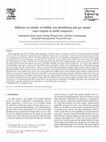
Chemical Engineering Journal, Jul 1, 2008
The investigation of the effect of salinity on the performance of airlift contactor was achieved ... more The investigation of the effect of salinity on the performance of airlift contactor was achieved using the 17 l internal loop airlift with height of 1.2 m, and 0.137 m diameter. Various draft tubes with different diameter sizes were provided to vary the ratio between downcomer and riser cross-sectional areas (A d /A r) from 0.061 to 1.01. The superficial gas velocity (u sg) was supplied in a range from 0.01 to 0.07 m/s and the salinity was adjusted from 0 to 45 ppt. The Sauter mean diameter of the bubble (d Bs) appeared to be smaller in saline water than in fresh water. Bubble size was regulated by two factors. The first one was the hydrophilic repulsive force which inhibited bubble coalescence whereas the second was the Laplace pressure which controlled the coalescence and breakup of bubbles. The range of pressure difference, P, acting on the bubble that promoted bubble coalescence was between 15 and 20 N/m 2 below which bubble coalescence was inhibited and above which bubble breakage prevailed. In saline water, d Bs decreased with u sg. This was caused by the collision and breakup of bubbles at high gas holdup which occurred at P greater than 20 N/m 2. Axial variation in d Bs was only observed at low u sg (less than 0.04 m/s) where bubbles in the bottom section of the airlift were larger than those in the middle and top sections. It was anticipated that the middle and top sections exhibited higher turbulent conditions than the bottom section at this low aeration rate. The effect of draft tube size was quite important where the smallest draft tube (smallest downcomer area) best promoted the breakup of the bubbles with a relatively high P of approximately 50-97 N/m 2. The effect of salinity on the overall volumetric mass transfer coefficient (k L a) was only apparent at high aeration rate where the fresh water provided a higher k L a than the saline water. In fact, the specific area (a) was high in the saline water systems, however, the mass transfer coefficient (k L) was higher in the fresh water system than saline water. Finally, a general correlation for the estimation of k L in the airlift system was proposed.
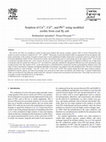
Chemical Engineering Journal, Oct 1, 2008
The coal fly ash (CFA) was modified to zeolite X using fusion method with cationic exchange capac... more The coal fly ash (CFA) was modified to zeolite X using fusion method with cationic exchange capacity (CEC) of about 140 meq/100 g. The zeolite was used as an effective sorbent for Cu 2+ , Cd 2+ , and Pb 2+. The pseudo-second order kinetic model was appropriate for the description of the kinetic performance of the sorption. It required a longer time to reach equilibrium for higher initial metal concentration and lower sorbent dose but all reached equilibrium within 120 min. External mass transfer step seemed to take part as a rate limiting step for the sorption of Pb 2+ at low initial concentration and high sorbent dose, on the contrary, the process was controlled more significantly by intraparticle diffusion step at high initial concentration and low sorbent dose. However, Cu 2+ was found to be generally controlled by intraparticle diffusion step at all concentration range examined in this work. The sorption of Cd 2+ , on the other hand was controlled both by external mass transfer and intraparticle diffusion steps at all range of initial concentration. Langmuir and Dubinin-Radushkevich isotherms were applied to describe equilibrium data. The order of maximum sorption capacity in a unit of mol kg −1 was: Pb 2+ (2.03) > Cu 2+ (1.43) > Cd 2+ (0.870). The sorption energy fell in the range of physic-sorption. Equilibrium sorption capacity and removal percentage were governed by both initial concentration and sorbent dose. A general mathematical model was developed for describing the sorption under the variations in initial metal concentration and zeolite doses. This model was proven to be reasonably accurate with additional sets of experiments.

Journal of Environmental Science and Health Part a, Aug 20, 2010
The fractionation of raw water from Bangkhen water treatment plant, Bangkok, Thailand revealed th... more The fractionation of raw water from Bangkhen water treatment plant, Bangkok, Thailand revealed that the mass distribution sequence of the six organic fractions from high to low was hydrophilic neutral (HPIN), hydrophobic acid (HPOA), hydrophilic acid, hydrophobic neutral, hydrophilic base, and hydrophobic base. The main organic matter components in raw water were HPIN and HPOA, which were also the two most important contributors of trihalomethane formation potential (THMFP). Linear dependencies between the level of each organic fraction and the formation potential of THM species were observed, which suggested the reactions between the organic fraction and chlorine during the chlorination were first order. The fractionation led to a deviation of bromide concentration in each organic fraction from the original concentration, and this affected the formation of brominated THM species. However, this effect was demonstrated to be
Journal of Bioscience and Bioengineering, Nov 1, 2009
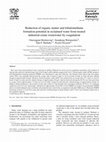
Journal of Hazardous Materials, Dec 9, 2005
Raw water from treated industrial estate wastewater in northern Thailand was used in jar-test coa... more Raw water from treated industrial estate wastewater in northern Thailand was used in jar-test coagulation experiments with variations of separate alum and ferric chloride dosages from 10 to 80 mg/L at pH conditions ranging from 5 to 6.5. Natural organic matter (NOM) surrogates and trihalomethane formation potential (THMFP) were determined to study their reduction. The obtained results showed that total organic carbon (TOC) were gradually reduced from the average value of about 6.1 mg/L to a level of about 4.0 mg/L by alum and ferric chloride dosages of approximately 40 mg/L. Moreover, dissolved organic carbon (DOC) were reduced from an average value of 5.1 mg/L to a level of about 4.0 mg/L by alum and ferric chloride dosages of approximately 40 mg/L. Specific ultraviolet absorption (SUVA) were decreased from an average value of approximately 4.7 L/mg m to a level of about 2 L/mg m by alum and ferric chloride dosages of approximately 20 mg/L. In addition, chlorine demands at 1 day reaction were the same as those of 7-day demands with a correlation coefficient of 0.98 (n = 10, correlation significant at the 0.01 level). Interestingly, chloroform of approximately 65 and 60% of total THMFP was found as the predominant THMFP species in treated industrial estate wastewater and reclaimed water, respectively, in comparison with other THM species. Maximum THMFP percentage removal of 25 and 28 by using alum and ferric chloride dosages of about 80 mg/L at pH 5.5 and 5 were obtained, respectively, at the examined conditions.
Materials Chemistry and Physics, Dec 16, 2013
Mesoporous ferrite spinels AFe 2 O 4 (A ¼ Co, Ni, Zn) from an acid complexation High crystallinit... more Mesoporous ferrite spinels AFe 2 O 4 (A ¼ Co, Ni, Zn) from an acid complexation High crystallinity in single spinel phase at calcination temperature of 500e900 C. The controllable pore size in a range of 3 nm up to a hundred nm. The maximum BET surface area at 201 (Co), 315 (Ni), and 273 (Zn) m 2 g À1 Ferromagnetism in CoFe 2 O 4 , superparamagnetismeferromagnetism in NiFe 2 O 4.
Progr Biotechnol, 1996
This paper describes results from a novel technique developed for measuring the rate at which the... more This paper describes results from a novel technique developed for measuring the rate at which the thickness of biofilms growing attached to the surfaces of tubular membranes increase over time. Two biofilm/immobilised cell model systems have been studied; Xanthobacter autotrophicus GJ10 growing on 1,2-dichloroethane and Pseudomonas sp. strain JS150 growing on monochlorobenzene. A dynamic mathematical model has been developed to explain the experimental results, treating the expansion of the biofilm as a moving boundary problem. This model is able to predict accurately the rate of biofilm growth and the overall system performance.

Preparative Biochemistry and Biotechnology, 2015
Microalgae are promising feedstock for biofuel production. Lipid content in microalgae could be e... more Microalgae are promising feedstock for biofuel production. Lipid content in microalgae could be enhanced under nutrient depletion. This work investigated the effect of the nutrient on lipid accumulation in Ankistrodesmus sp. culture. Batch cultures were carried out using fresh BG11 medium, and after the harvest, the medium was reused for the next culture, and this method was repeated two times. The maximum lipid productivity of 29.75 mg L(-1) d(-1) was obtained from the culture with the 2nd reuse medium. In continuous cultures, Ankistrodesmus sp. was cultured in both fresh and modified BG11 mediums. The modified BG11 medium was adjusted to resemble the content of the 1st reuse medium. As a comparison between batch and continuous cultures, it was proven that the productivity in the continuous culture was better than the batch where the achievable maximum biomass and lipid were 188.30 and 38.32 mg L(-1) d(-1). The maximum lipid content of 34.22% was obtained from the continuous culture at the dilution rate of 0.08 d(-1), whereas the maximum saturated and unsaturated fatty acid productivities of 79.96 and 104.54 mg L(-1) d(-1) were obtained at the dilution rate of 0.16 d(-1.)

In this study, a life cycle assessment (LCA) technique based on ISO 14040 series was performed to... more In this study, a life cycle assessment (LCA) technique based on ISO 14040 series was performed to evaluate biodiesel production from freshwater microalgae Scenedesmus armatus in terms of energy efficiency (Net Energy Ratio or NER) and environmental impact (Global Warming Potential or GWP). The system boundary covered the entire life cycle of microalgae-based biodiesel, which was divided into four distinct steps: cultivation, harvesting, oil extraction, and transesterification. Based on a functional unit of 1 MJ biodiesel, NER was found to be 0.34 and 0.19 for mass allocation and energy allocation, respectively. This energy deficit (NER< 1) for both allocation methods was due to the high energy input required to culture microalgae. However, CO2 uptake in biomass agriculture leads to better performance in global warming potential (GWP) when compared to conventional diesel and biodiesel produced from rapeseed and soybean. This is a result of the cultivation process in which microalg...

Preparative Biochemistry and Biotechnology, 2015
The cultivation of Scenedesmus armatus was carried out under outdoor Thailand climate condition. ... more The cultivation of Scenedesmus armatus was carried out under outdoor Thailand climate condition. The highest actual growth rate occurred at around 9:00 AM to 3:00 PM with a wide pH range of 6.4 to 11. The supply of CO2 had slightly influence to growth characteristics but did exert some observable effects on nutritional accumulations. Adding CO2 from 2 to 15% by volume in the aeration (0.2 vvm) caused an increase in lipid and protein from 19.8 to 25.6 and 37.8 to 48.2% w/w, respectively, whereas carbohydrate decreased from 42.5 to 26.2% w/w. S. armatus cultivated with 2% CO2 enriched air provided the highest the average of the average biomass productivity of 91.25 mg L(-1)d(-1) which corresponded to a CO2 fixation of 165 mg CO2 L(-1)d(-1) with the average lipid, protein and carbohydrate productivities of 22.24, 38.34 and 30.67 mg L(-1)d(-1.)
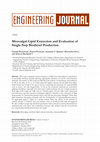
Engineering Journal, 2012
This work examined solvent extraction of lipid from microalgae for production of renewable biofue... more This work examined solvent extraction of lipid from microalgae for production of renewable biofuels, thereby allowing appropriate selection of solvent and extraction methods. The results of this study revealed that the mixture of chloroform and methanol (C/M) at the ratio of 2:1 (v/v) could extract the highest amount of total lipid from algae, while hexane was found to be a good solvent, concerning the selectivity for targeted lipids such as mono-, di-and tri-glycerides. As far as the extraction methods are concerned, applying disruption, especially with microwave could accelerate the rate of lipid extraction from algae with tough cell walls such as Chlorella vulgaris. On the other hand, ultrasound and microwave assisted extraction techniques added no benefits to the extraction of lipid from powder of Haematococcus pluvialis whose cell wall was previously damaged. Other than lipid extraction, this paper concerns with the development of transesterification process for algal lipid using C. vulgaris as a model system. Here, the effects of the amount of catalyst, alcohol to biomass ratio and reaction time on biodiesel yield were investigated. We also studied a single-step biodiesel production where extraction and transesterification simultaneously took place and comparison between this method and the conventional two-step biodiesel production process was made.




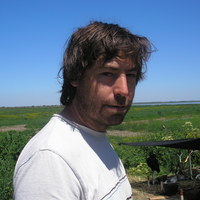





Uploads
Papers by Prasert Pavasant